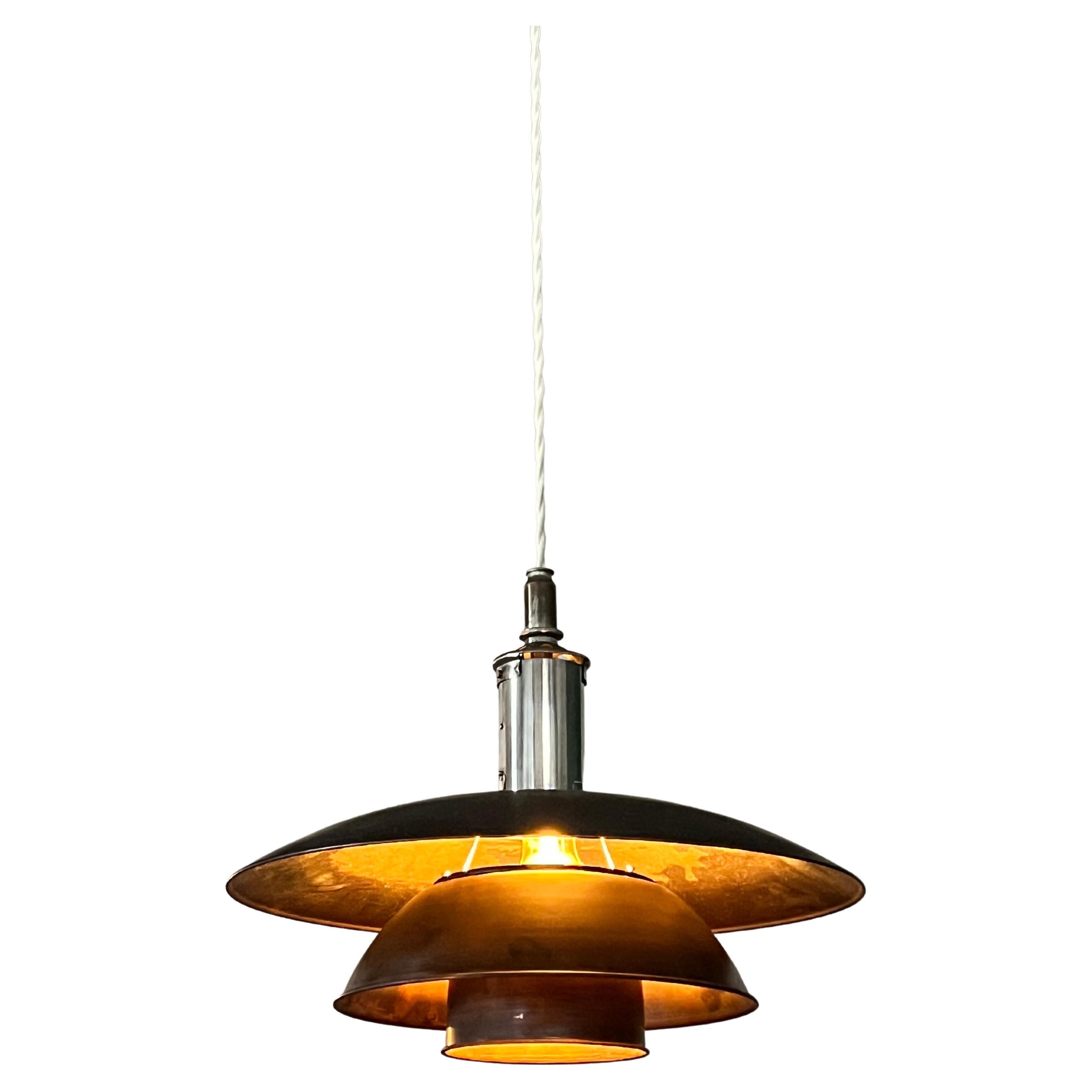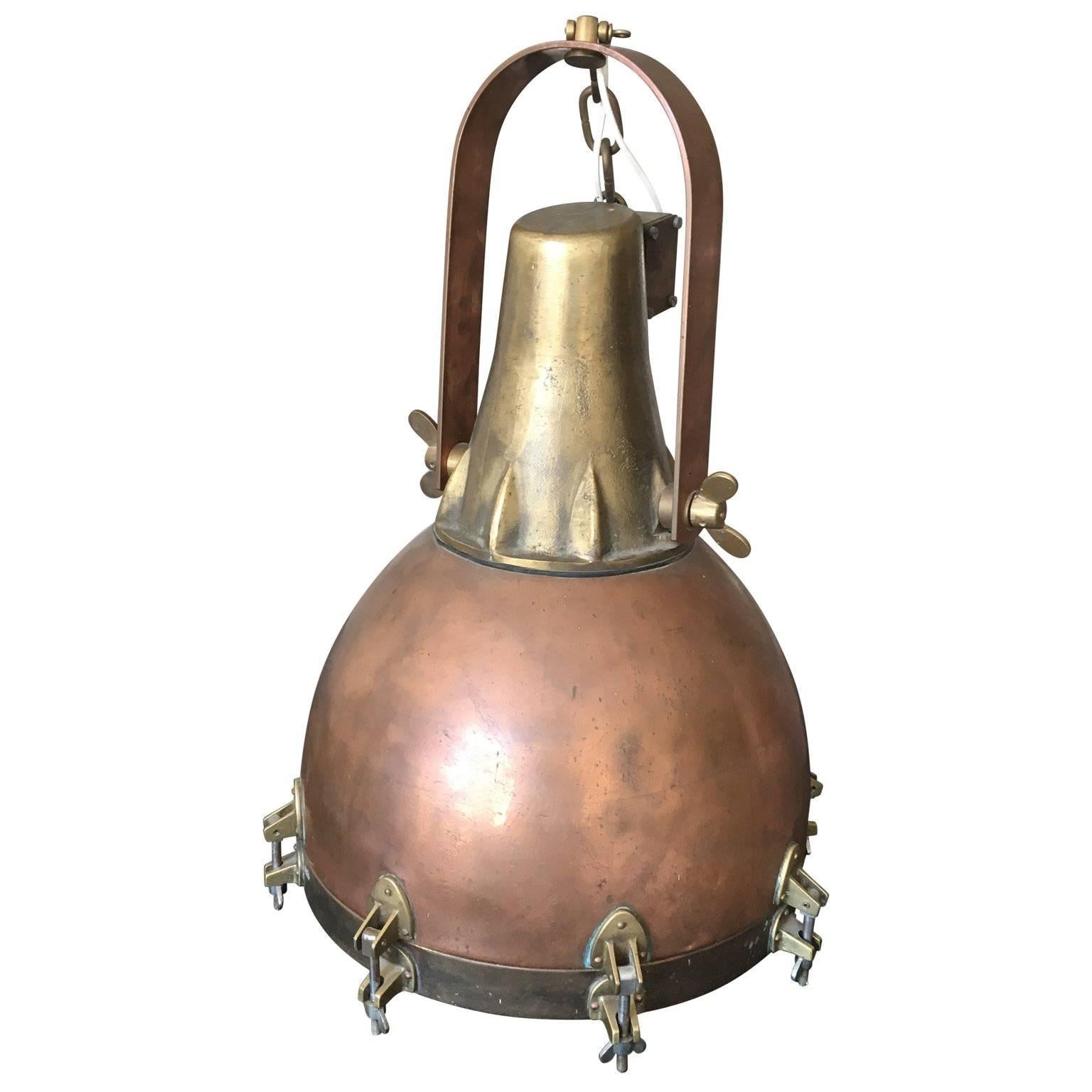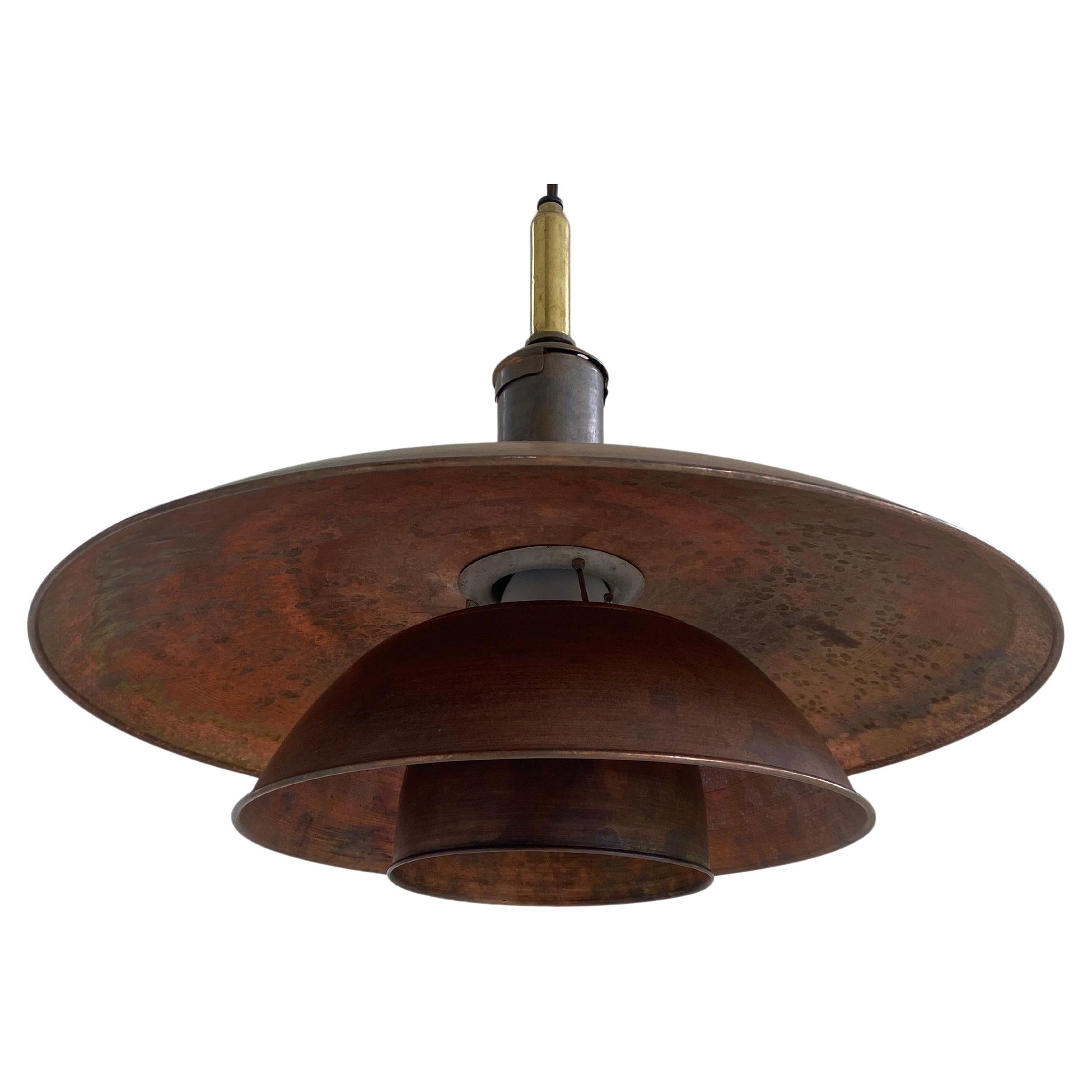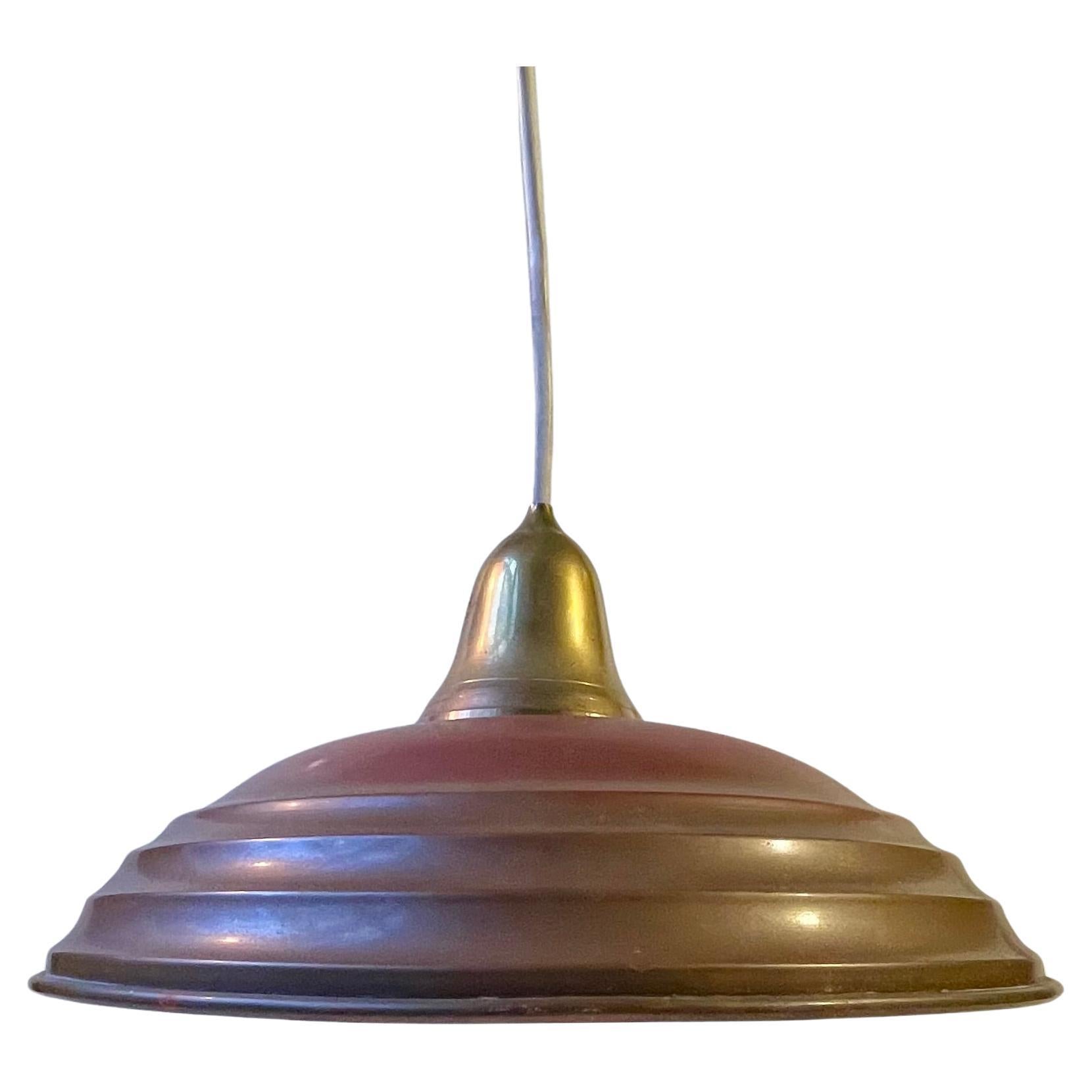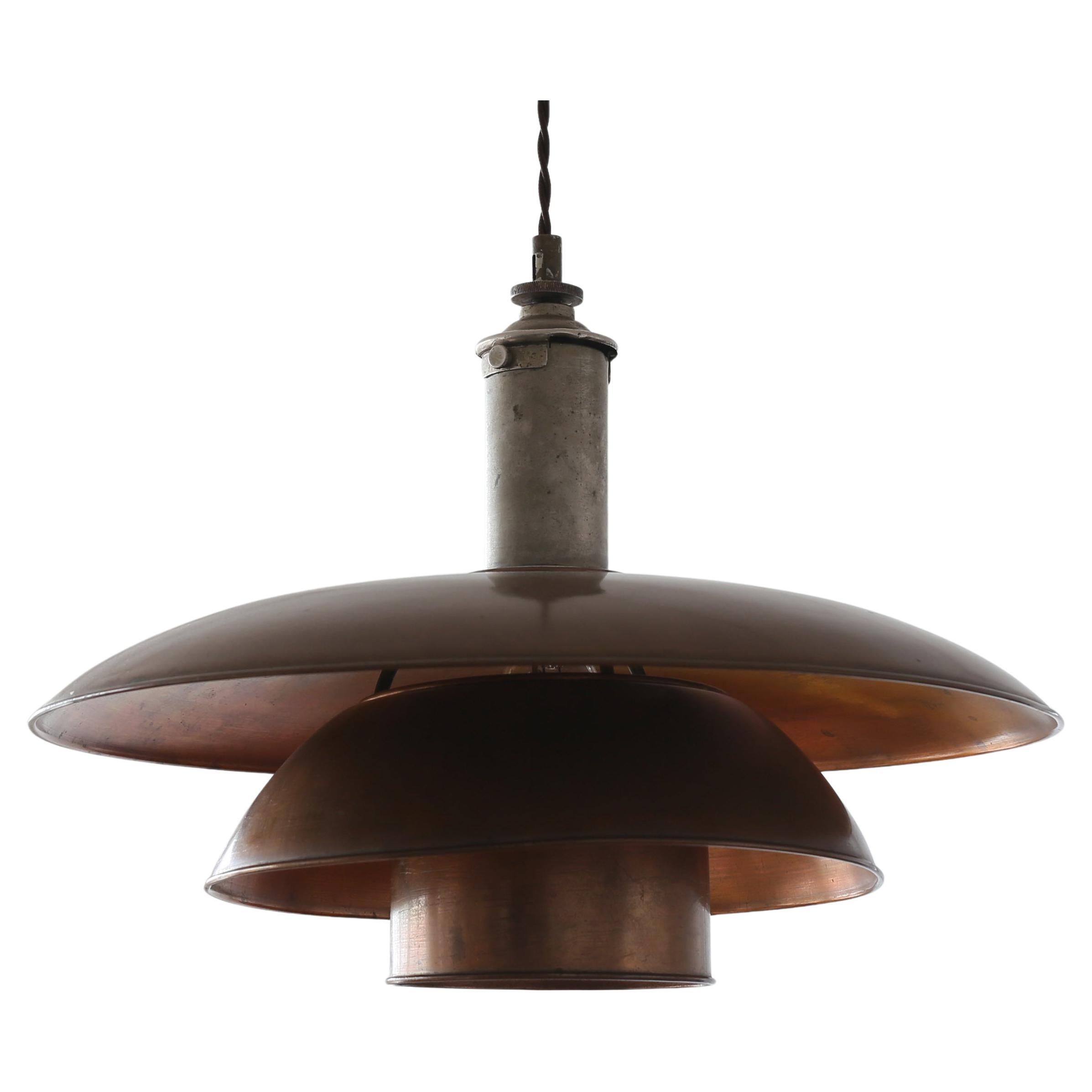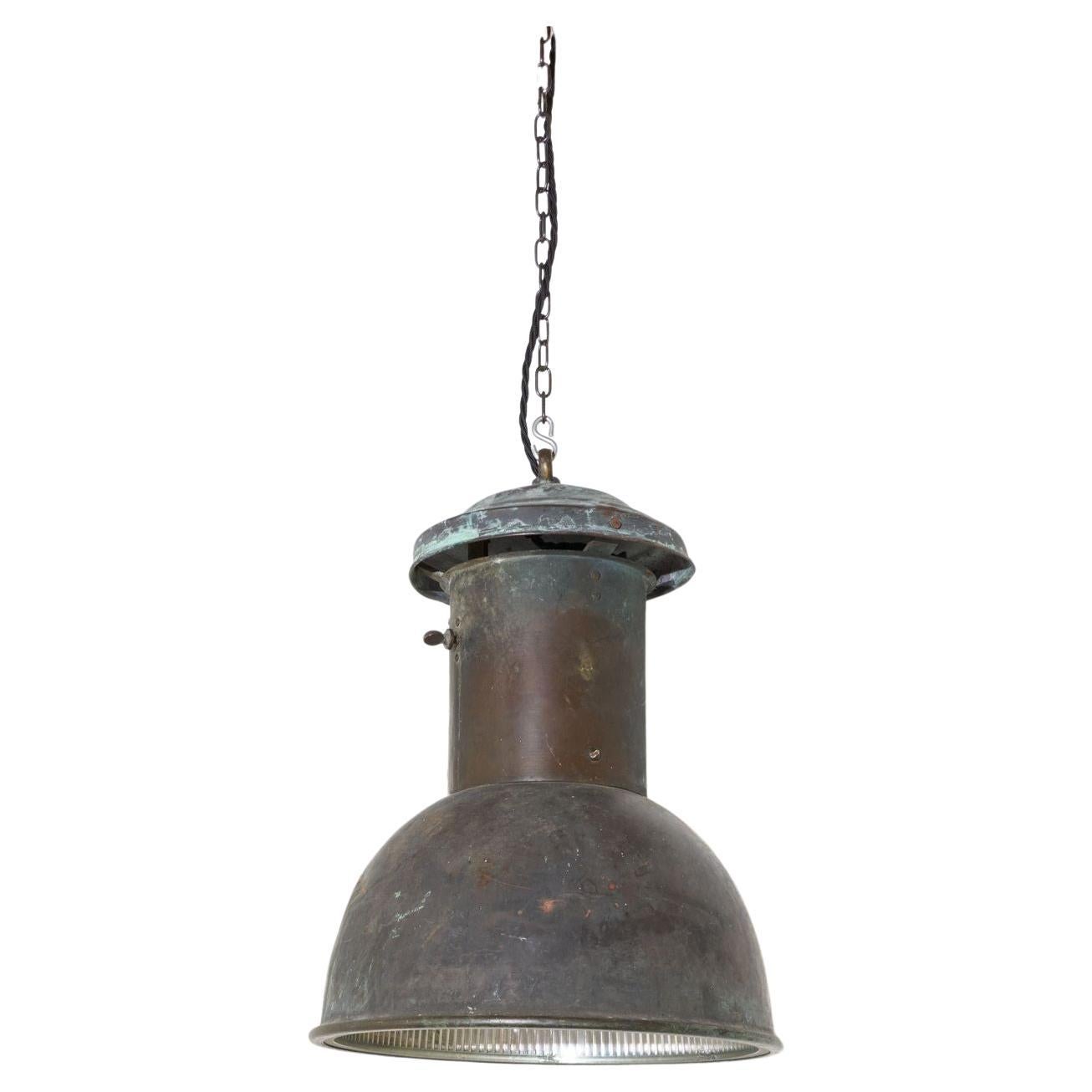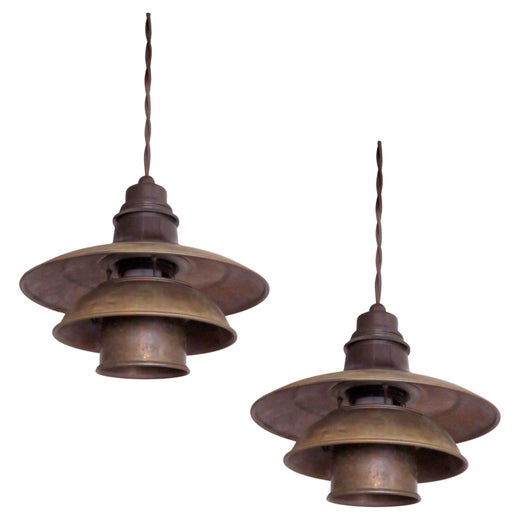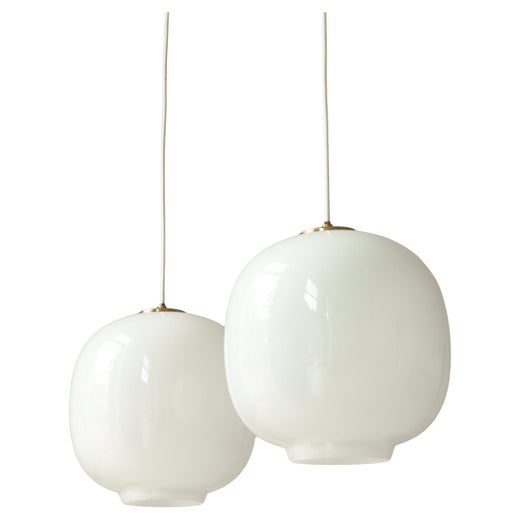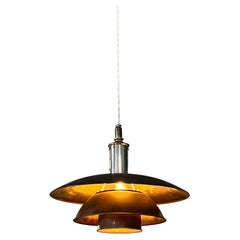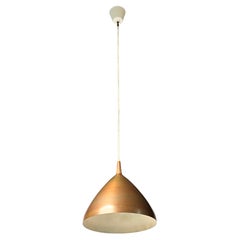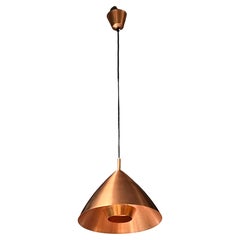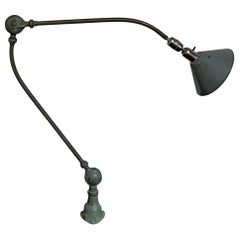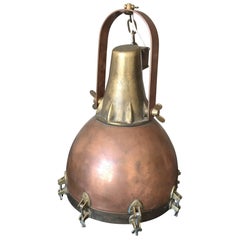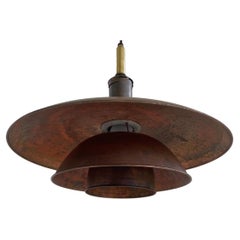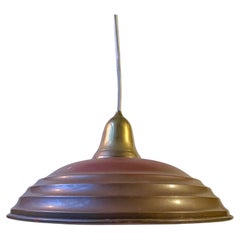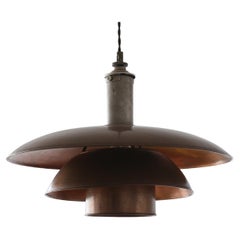Industrial copper and brass hanging lamp from 1850's
About the Item
- Creator:Poul Henningsen (Designer),Louis Poulsen (Manufacturer)
- Dimensions:Height: 41.34 in (105 cm)Diameter: 14.38 in (36.5 cm)
- Power Source:Hardwired
- Lampshade:Included
- Style:Scandinavian Modern (Of the Period)
- Materials and Techniques:
- Place of Origin:
- Period:
- Date of Manufacture:1850s
- Condition:Wear consistent with age and use. Minor fading. Lots of patina.
- Seller Location:Forest, BE
- Reference Number:1stDibs: LU8186236273172
Poul Henningsen
The name Poul Henningsen is synonymous with the best and most innovative modern Scandinavian lamps and other lighting. The Danish designer created a signature vocabulary of fixtures with tiered and layered shades in sculptural arrangements that are at once naturalistic and geometric.
Henningsen grew up in a town on the outskirts of Copenhagen and studied architecture at the Technical University of Denmark. He would become a noted art critic, journalist and screenwriter, but his first love was lighting design.
Henningsen’s childhood home was illuminated by oil lamps. When his family switched to electrified lighting, he was alarmed and repelled by the harsh glare cast by an incandescent bulb, and in his late teens he began conducting quasi-scientific experiments to measure which materials and methods best diffused or reflected light to give it a warm brightness. His work came to the attention of the lighting-fixtures firm Louis Poulsen, which sponsored the development of a prototype lamp. The design won a gold medal at the 1925 Paris Expositions Internationales des Arts Decóratifs et Industriels Modernes — from which the term Art Deco derives. The lamp, whose three-part shade is said to be inspired by the arrangement of a dinner plate atop a soup bowl atop a teacup, became the basis for Henningsen’s most successful design, the PH 4/3 desk lamp.
All told, Henningsen would design some 100 lighting fixtures in his career. Some of his most notable creations are hanging lamps, which include the Septima (1929), a pendant composed of seven graduated frosted-glass layers; the Spiral (1942), made of a single ribbon of enameled aluminum; and the Artichoke lamp (1958), whose 70 glass or metal fins in a staggered and graduated arrangement on a central steel frame resemble those of its namesake. The last is likely Henningsen’s masterwork and an icon of mid-20th-century design. Like all Henningsen lighting designs, it is striking, sculptural and — thanks to his insistence on the primacy of the quality of the light cast — superbly functional.
Find a collection of authentic Poul Henningsen table lamps, floor lamps and other lighting on 1stDibs.
Louis Poulsen
Louis Poulsen is world-renowned as an innovator in modern Danish lighting, but this wasn’t the goal from the start. Founded in 1874 by Ludvig R. Poulsen as a wine importer, the business went through several incarnations before its first pendant lights came to fruition. Through its designs, the company helped establish the foundations of good lighting — function, comfort and ambience — that are now standard in modern furniture design.
In 1924, Danish architect Poul Henningsen partnered with Louis Poulsen & Co., then an electrical supply company, to create what’s now known as the Paris lamp. This design, which incorporated three layers of curved metal disks, created ambience with its indirect light instead of glare. Shown at the 1925 Exposition Internationale des Arts Décoratifs et Industriels Modernes in Paris — the exhibition that brought Art Deco design to worldwide attention — the Paris lamp was awarded a gold medal. This led to Poulsen and Henningsen working together on several lighting pieces, including the popular PH pendant light with its concentric shades for the Forum Building in Copenhagen. These high-profile projects helped make Louis Poulsen a go-to purveyor of innovative lighting design.
One of the company’s most well-known lamps is Henningsen’s PH Artichoke lamp (1958), with its 72 copper leaves artfully placed to conceal the light bulb, prevent glare and promote a warm, alluring glow in any room. Another is the steel and die-cast zinc AJ lamp (1960), which Arne Jacobsen designed with an adjustable angled shade for his commission for the SAS Royal Hotel in Copenhagen. The company has also worked with notables such as Verner Panton and Alfred Homann as well as, more recently, Louise Campbell and Oki Sato.
In 2010, the company was awarded the American Institute of Architects’ Honors in Collaborative Achievement Award; it was the first lighting manufacturer to receive this honor. In 2018, the company was acquired by an investment subsidiary of Investindustrial VI L.P.
Still headquartered in Denmark, the brand continues to produce its high-end lighting for both indoor and outdoor use, manufacturing both classic icons as well as new designs. “We design to shape light,” states Louis Poulsen. In doing so, they have also shaped culture.
Find a range of new and vintage Louis Poulsen floor lamps, table lamps and other lighting and furniture on 1stDibs.
- ShippingRetrieving quote...Shipping from: Forest, Belgium
- Return Policy
More From This Seller
View AllVintage 1930s Danish Scandinavian Modern Chandeliers and Pendants
Brass, Copper, Nickel
Vintage 1950s Swedish Scandinavian Modern Chandeliers and Pendants
Metal, Brass
Vintage 1950s Finnish Scandinavian Modern Chandeliers and Pendants
Copper
Vintage 1930s Swedish Industrial Wall Lights and Sconces
Steel, Nickel
Vintage 1930s Danish Scandinavian Modern Wall Lights and Sconces
Brass
Mid-20th Century Swedish Scandinavian Modern Wall Lights and Sconces
Copper
You May Also Like
Mid-20th Century Danish Industrial Chandeliers and Pendants
Brass, Copper
Vintage 1930s Danish Scandinavian Modern Chandeliers and Pendants
Metal, Brass, Copper
Early 20th Century European Bauhaus Chandeliers and Pendants
Brass, Copper
20th Century Danish Scandinavian Modern Chandeliers and Pendants
Metal, Copper, Nickel
20th Century Chandeliers and Pendants
Copper
Vintage 1970s German Industrial Chandeliers and Pendants
Brass, Copper, Steel
